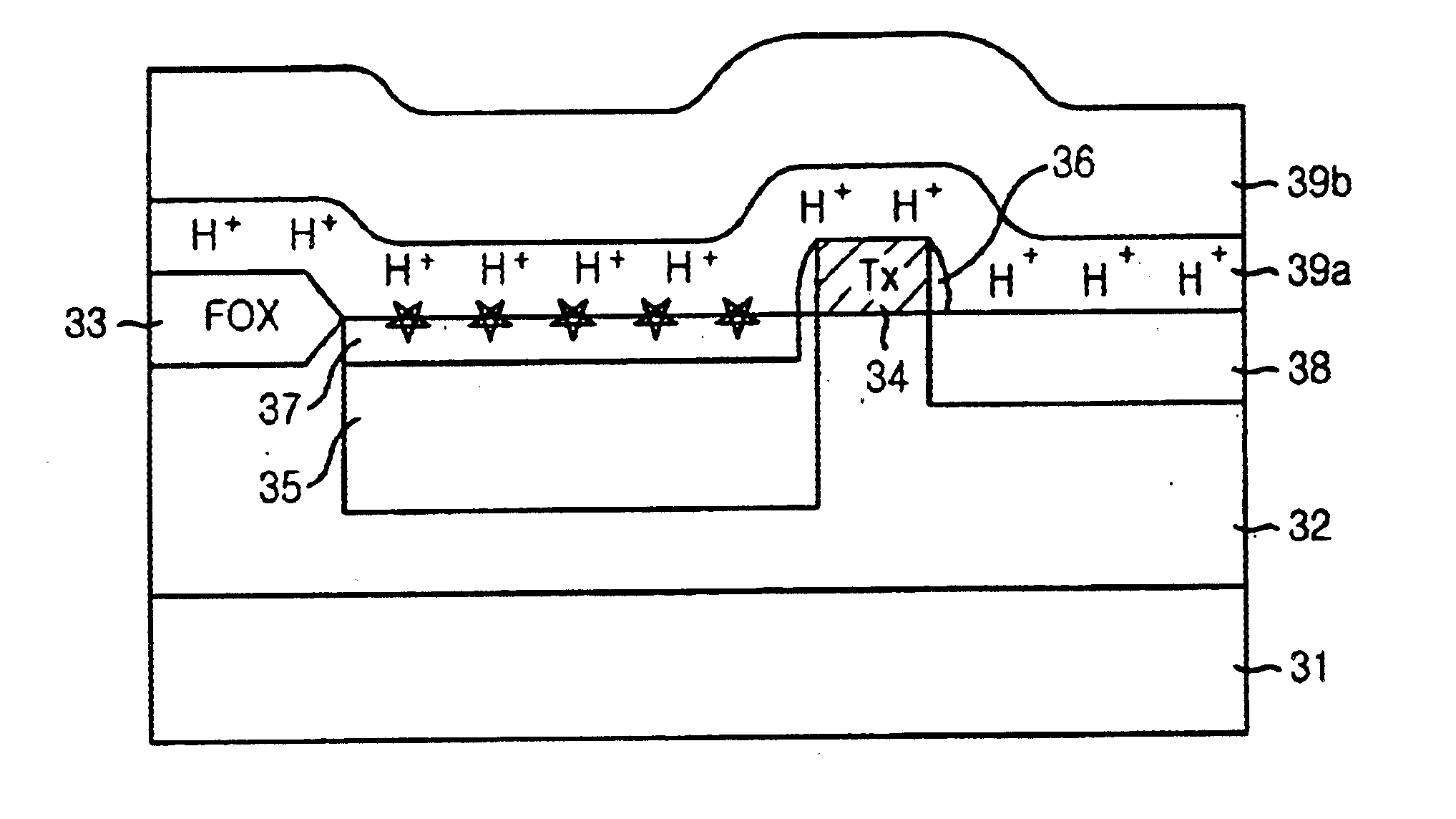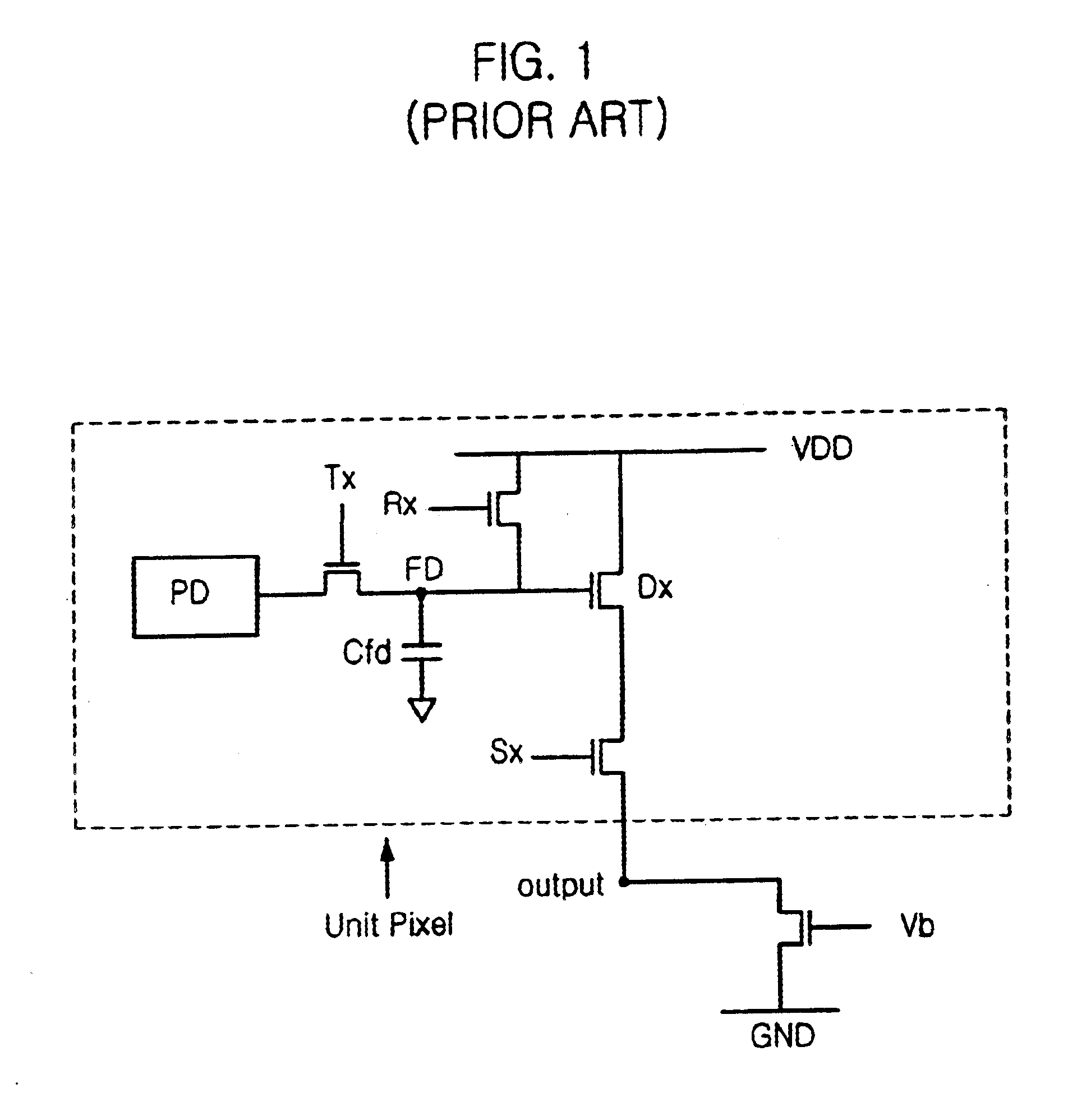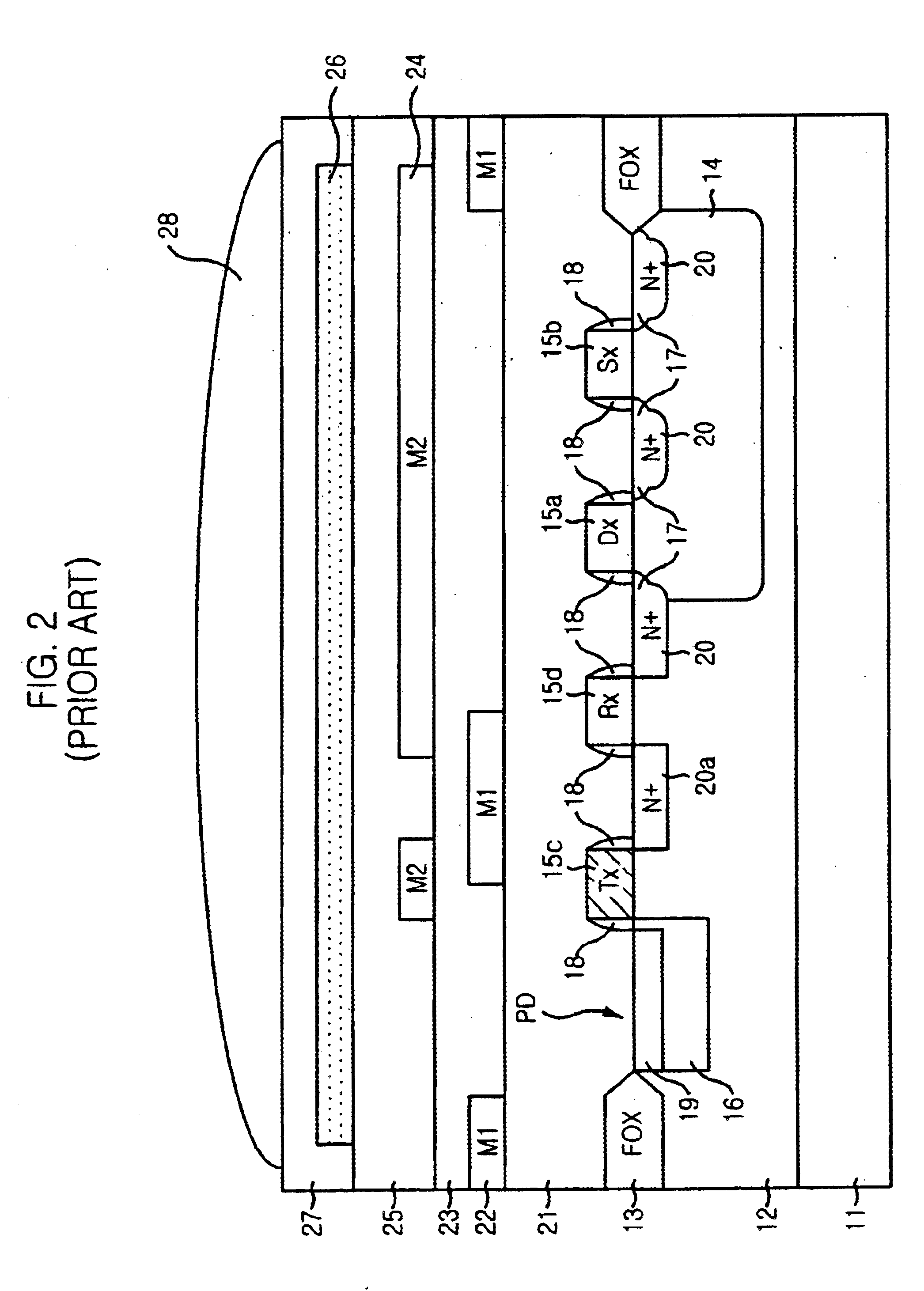Method of manufacturing image sensor for reducing dark current
a technology of image sensor and dark current, which is applied in the direction of semiconductor devices, diodes, radiation control devices, etc., can solve the problems of preventing the dangling bond from being removed and suppressing the excessive generation of dark current, so as to prevent the deterioration of picture quality
- Summary
- Abstract
- Description
- Claims
- Application Information
AI Technical Summary
Benefits of technology
Problems solved by technology
Method used
Image
Examples
Embodiment Construction
Hereinafter, a method for manufacturing an image sensor for reducing a dark current according to the disclosed method will be described in detail referring to the accompanying drawings.
FIGS. 4A to 4C are cross-sectional views showing a method of manufacturing a complementary metal oxide semiconductor (CMOS) image sensor in accordance with the disclosed method. In these figures, a reset transistor, a drive transistor and a select transistor are omitted.
Referring to FIG. 4A, a p-epitaxial layer 32 is grown on a p.sup.+ -substrate 31. Herein, the p.sup.+ -substrate 31 is doped with a high concentration of p-type dopant and the p-epitaxial layer 32 is doped with a low concentration of p-type dopant. After growing the p-epitaxial layer 32, a field oxide layer 33 for separating unit pixels is formed in a predetermined region of the p-epitaxial layer 32 by using a local oxidation of silicon (LOCOS) method.
Thereafter, a p-well (not shown) is formed in a predetermined region of the p-epitaxi...
PUM
 Login to View More
Login to View More Abstract
Description
Claims
Application Information
 Login to View More
Login to View More - R&D
- Intellectual Property
- Life Sciences
- Materials
- Tech Scout
- Unparalleled Data Quality
- Higher Quality Content
- 60% Fewer Hallucinations
Browse by: Latest US Patents, China's latest patents, Technical Efficacy Thesaurus, Application Domain, Technology Topic, Popular Technical Reports.
© 2025 PatSnap. All rights reserved.Legal|Privacy policy|Modern Slavery Act Transparency Statement|Sitemap|About US| Contact US: help@patsnap.com



